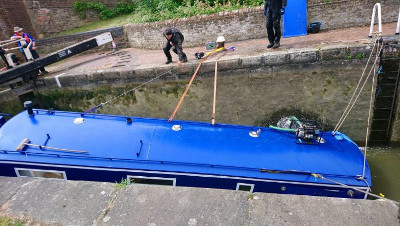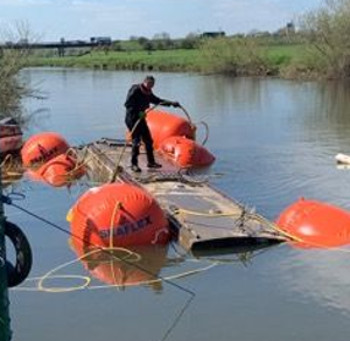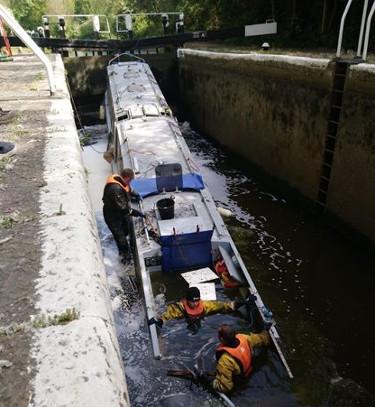AS MANY 'newby' boat owners and hirers are now planning their cruises for the year, it is perhaps time to consider the dangers of boating.
 River Canal Rescue
River Canal Rescue
Only too often we are told of the joys of boating on our waterways, but there are dangers that can strike the unwary, sadly all too often. So perhaps it is time for the boat rescue company, River Canal Rescue, to point out the dangers of sinking:
These heart-breaking scenarios typically require extensive health & safety risk assessments, rescue teams, divers, rescue boats, air bags and specialist pumping equipment. Teams will seal all water entry points, pump out the vessel and refloat it.
The important bilge pump
Such situations also call for an element of detective work to identify the cause of the sinking, which in some cases, could have been prevented with bilge pumps. Cases include:
 Water ingress due to vandalism
Water ingress due to vandalism
Water ingress due to an old exhaust port submerging when the boat listed
Water ingress due to washing machine outlet close to water line and underfloor leak causing vessel to sit lower in water
Water ingress via redundant air vents, caused by flood water and high winds
Leak from tank/shower pipe caused by a hole in the bow thruster tube
Leaking bowl thruster pipe
Leaking water pumps
Leaking stern tube seal
Leaking stern gland and incorrectly fitted weed hatch
Broken weed hatch seal
Weed hatch opened (owner trying to clear fouled propeller)
Weed hatch not secured
Rotting transom
Overplating, additional bilge ballast caused boat to sit low in the water, exhaust and outlets 1 inch above water line, plus leaking stern gland
Hole in the hull
Ropes tied to a solid mooring plinth, rather than a floating pontoon, so when water levels rose, vessel restricted by ropes and unable to rise beyond a certain point
Too tight ropes and rising water levels allowed water to seep in
Caught on lock cills.
Lock cills
 Lock cills – these below-water protrusions, positioned close to the top gates of most locks—catch many people out. If travelling downhill in the lock chamber and the stern, ie rudder, gets caught on the cill, when the water recedes only the boat’s bow will lower with the water level, leaving the stern raised up. Sinking or capsizing can happen in seconds.
Lock cills – these below-water protrusions, positioned close to the top gates of most locks—catch many people out. If travelling downhill in the lock chamber and the stern, ie rudder, gets caught on the cill, when the water recedes only the boat’s bow will lower with the water level, leaving the stern raised up. Sinking or capsizing can happen in seconds.
If the stern is caught, quickly close the bottom gate paddles to stop the water receding further and slowly open the top gate paddles to refill the lock. To stay safe in a lock, position the boat centrally and where possible keep the engine running with a centre line to hold it in position whilst tying off.
Travelling uphill
A boat travelling uphill can equally get its bow stuck on a projection under the top gate—causing the stern only to rise with the water level. If this happens, close the top gate paddles to prevent the lock filling and open the bottom gate paddles to allow the water level to fall.
Locks also pose other challenges, as was the case for the wide beam hotel boat stuck in a lock it was too wide for (a four-man rescue team released it).
Engine first aid
In a sinking situation, engine first aid may be required. Once refloated, this involves removing the engine injectors and water from their bores, draining water from the fuel tank, flushing drained oil, refilling with fresh oil and fitting new fuel and oil filters. The alternator may also need overhauling.
[Our thanks to Francesca Breeze for compiling this information—Editor.]
